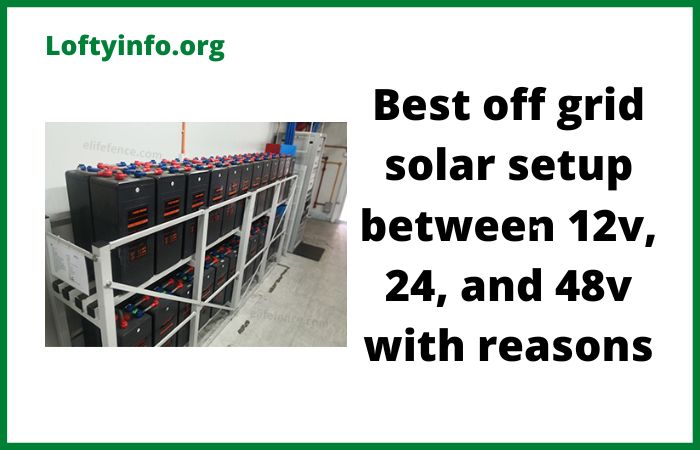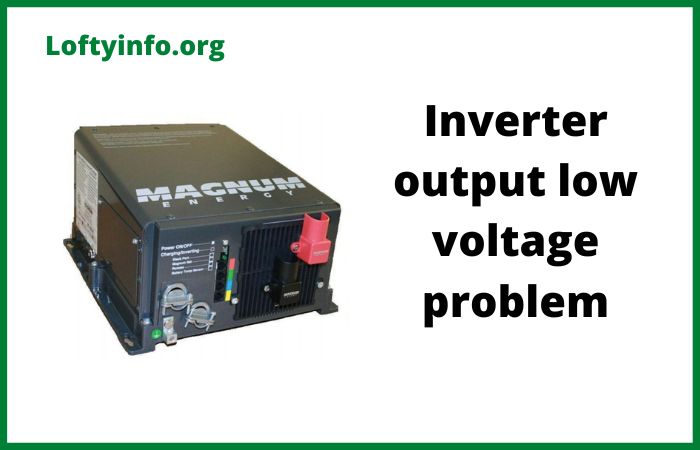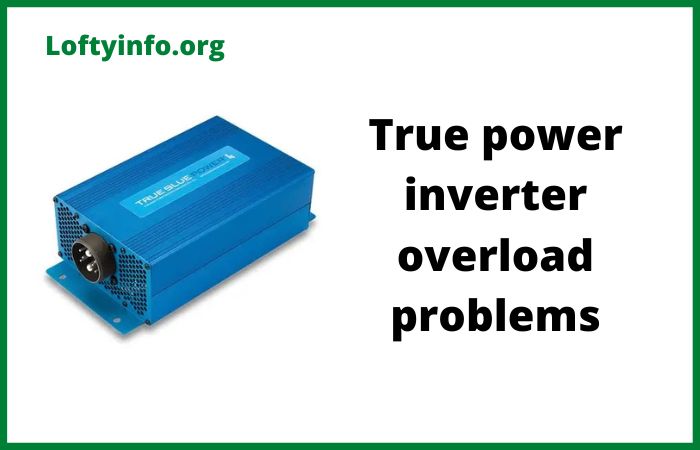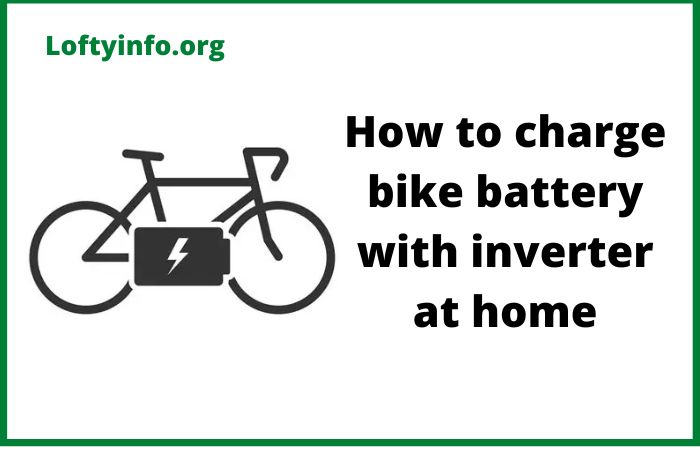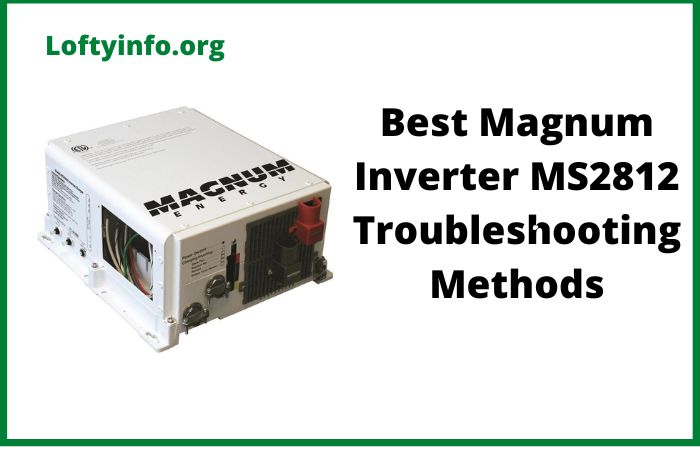Best Off Grid Solar Setup Between 12v, 24v and 48v
Choosing the right voltage for your off-grid solar system is one of the most critical decisions that will impact your installation’s efficiency, cost and long-term performance.
Many beginners assume that lower voltages like 12V are simpler and safer but this misconception can lead to costly mistakes and underperforming systems.
The voltage you select determines everything from wire sizing and component compatibility to energy losses and system expandability.
After years of real-world testing and installations across thousands of off-grid properties, 48V systems have emerged as the superior choice for most applications.
This comprehensive guide explains exactly why 48V configurations deliver better results than their 12V and 24V counterparts.
Reasons Why 48 v Solar Setup Is Best For Off Grid Solar Setup
1) Dramatically Lower Current and Reduced Power Loss
The relationship between voltage, current and power loss represents the most compelling technical reason to choose 48V systems over lower voltage alternatives.
Electrical power is calculated by multiplying voltage and current together which means that for any given power level you can achieve the same result with high voltage and low current or low voltage and high current.
The critical insight is that power loss in wires occurs as a function of current squared multiplied by resistance.
A practical example illustrates this principle clearly. Consider a 2400 watt load running on different system voltages.
A 12V system draws 200 amps of current to deliver this power while a 24V system draws 100 amps and a 48V system draws only 50 amps.
When you calculate power loss through cables the differences become stark.
If your cable has 0.01 ohms of resistance the 12V system loses 400 watts as heat in the wiring while the 24V system loses 100 watts and the 48V system loses just 25 watts.
The 48V configuration is 16 times more efficient than 12V regarding cable losses.
These efficiency improvements translate directly to real-world benefits.
Your batteries last longer because they are not being drained by parasitic losses in the wiring.
Solar panels charge batteries faster because more of their output actually reaches the battery bank.
Inverters run cooler and more efficiently when fed with proper voltage levels.
The reduced current flow means less stress on all electrical connections which improves system reliability and reduces maintenance requirements.
For systems running high-power loads like air conditioners, water pumps or power tools the efficiency advantage of 48V becomes even more pronounced and can mean the difference between a system that works well and one that constantly struggles.
2) Significantly Smaller and More Affordable Wire Sizes
Wire sizing requirements scale dramatically with current flow and this is where 48V systems provide massive cost savings and installation advantages.
Electrical codes mandate minimum wire sizes based on the current they must carry safely. The higher current in 12V and 24V systems forces you to use much thicker and more expensive cables throughout your installation.
Running that same 2400-watt example through wire sizing calculations reveals the practical impact.
To safely carry 200 amps at 12V over a 10-foot distance requires 2/0 AWG cable which costs approximately $8 to $12 per foot and is extremely difficult to work with due to its stiffness and weight.
The same power delivery at 24V drawing 100 amps requires 2 AWG cable at roughly $3 to $4 per foot. At 48V drawing only 50 amps you can use 6 AWG cable costing around $1 to $1.50 per foot.
For a typical off-grid installation with multiple cable runs between solar arrays, charge controllers, battery banks and inverters, the cost difference easily reaches thousands of dollars.
Beyond cost the physical handling advantages of smaller wire cannot be overstated.
Trying to bend and route 2/0 cable through conduit and around corners is a frustrating and time-consuming task that often requires two people.
Making proper crimped connections requires expensive specialized tools. In contrast 6 AWG cable is flexible enough to work with easily and fits standard crimp terminals that work with affordable tools.
The smaller conduit sizes needed for 48V systems also reduce material costs and installation labor.
For DIY installers who want to build their own systems the more manageable wire sizes of 48V configurations make the project far more accessible without sacrificing any capability.
3) Greater System Expandability and Scalability
Off-grid solar needs rarely remain static over time. Most system owners eventually want to add more solar panels, increase battery capacity or power additional loads they did not initially anticipate.
The scalability limitations of 12V and 24V systems become painfully apparent when expansion time arrives.
Current limitations create the primary constraint.
Most charge controllers and inverters have maximum current ratings that cannot be exceeded.
A 12V system reaching its controller’s current limit cannot add more solar capacity without installing additional parallel controllers which adds cost and complexity.
The same controller used in a 48V configuration can handle four times the wattage before hitting current limits because the higher voltage reduces current proportionally.
A quality MPPT charge controller rated for 60 amps can manage 720 watts at 12V, 1440 watts at 24V or 2880 watts at 48V.
This scalability advantage means 48V systems can grow with your needs using the same core components.
Battery bank expansion presents another scalability consideration. Series and parallel configurations of batteries create different voltage and capacity combinations.
A 12V bank requires many batteries in parallel to achieve significant capacity which increases the complexity of keeping all batteries balanced and healthy.
A 48V bank uses fewer parallel strings with more series connections which improves balance and reliability.
Adding capacity to a 48V system typically means adding one more series string of batteries compared to adding four parallel batteries in a 12V system which risks creating imbalances if the new batteries do not perfectly match the old ones in age and condition.
The cleaner architecture of 48V systems makes long-term expansion more practical and reliable.
4) Better Compatibility with Modern Inverters and Equipment
The off-grid solar industry has evolved significantly over the past decade and equipment manufacturers have standardized around 48V as the preferred system voltage for residential installations.
This market reality creates practical advantages for 48V system builders in terms of equipment selection, features and cost.
Modern high-quality inverters are predominantly designed for 48V operation.
Manufacturers like Victron, Outback, Sol-Ark and Schneider Electric offer their most advanced features, highest efficiency ratings and best warranty terms on 48V models.
Their 12V and 24V offerings are often older designs with fewer features or are simply limited-power models intended for RVs and boats rather than whole-home systems.
The 48V inverters typically include built-in transfer switches, advanced battery charging algorithms, grid-tie capabilities and sophisticated monitoring systems that are absent from lower-voltage alternatives.
Battery technology compatibility also favors 48V systems. Modern lithium iron phosphate batteries with integrated battery management systems are predominantly available in 48V configurations.
These batteries offer superior performance, longer lifespan and better safety features compared to traditional lead-acid batteries but their advanced features are optimized for 48V system integration.
Many lithium battery manufacturers do not even offer 12V or 24V versions in their residential product lines.
The growing adoption of 48V as the industry standard means future component availability will continue improving for this voltage while 12V and 24V equipment may become increasingly specialized niche products.
5) Improved Safety and Reduced Fire Risk
Electrical safety is a paramount concern in any power system and the lower current levels in 48V installations provide meaningful safety improvements over high-current 12V systems.
While 48V does require more respect regarding shock hazard compared to 12V, the fire safety benefits far outweigh this consideration for properly installed systems.
High current represents one of the most significant fire hazards in electrical installations.
Every connection point in a system is a potential failure point where resistance can develop over time due to corrosion, vibration or improper installation.
A connection with just 0.001 ohms of resistance is negligible in a low-current circuit but becomes dangerous in high-current applications.
That same connection carrying 200 amps at 12V dissipates 40 watts of heat which can quickly melt insulation and ignite surrounding materials.
At 50 amps in a 48V system the same resistance creates only 2.5 watts of heat which is unlikely to cause thermal damage.
The reduced current in 48V systems also allows circuit protection devices like fuses and breakers to work more effectively.
A 200-amp fuse requires significant current overload to blow quickly which means moderate overcurrent conditions might persist long enough to damage wiring before protection activates.
A 50-amp breaker responds more predictably to overcurrent conditions and can interrupt fault conditions before they escalate.
The smaller wire sizes used in 48V systems also have more consistent and predictable thermal characteristics which helps circuit protection devices function as designed.
Optimal Balance of Performance and Safety
The selection between 12V, 24V and 48V for off-grid solar ultimately represents a balance between performance, cost, complexity and safety considerations.
While 12V systems have a place in very small installations like RVs, boats or tiny cabins where total power consumption rarely exceeds a few hundred watts, they quickly become impractical for whole-home systems.
The extreme current requirements, massive wire sizes and efficiency losses make 12V unsuitable for serious off-grid living.
The 24V voltage represents a middle ground that offers some improvement over 12V but still falls short of 48V performance in nearly every metric.
For small to medium-sized cabins drawing 2000 to 4000 watts of continuous power, 24V might seem like a reasonable compromise.
The reality is that component costs are similar between 24V and 48V equipment but the 24V system will still require larger wire sizes, experience more power losses and have less room for future expansion.
The modest cost savings of 24V versus 48V equipment is quickly eroded by higher installation costs and reduced long-term efficiency.
The 48V configuration emerges as the clear winner for virtually all residential off-grid applications.
The combination of minimal power losses, reasonable wire sizes, excellent scalability, broad equipment compatibility and improved safety creates a compelling case that becomes stronger as system size increases.
Any off-grid home planning to run modern appliances, power tools or climate control equipment should build around 48V from the beginning.
The initial system design costs slightly more in components that step up voltage from 12V or 24V alternatives but the long-term benefits in efficiency, reliability and expandability far exceed this modest premium.
For those serious about off-grid independence, 48V is not just the best choice but the only logical choice for building a professional-quality system that will deliver reliable power for decades.
